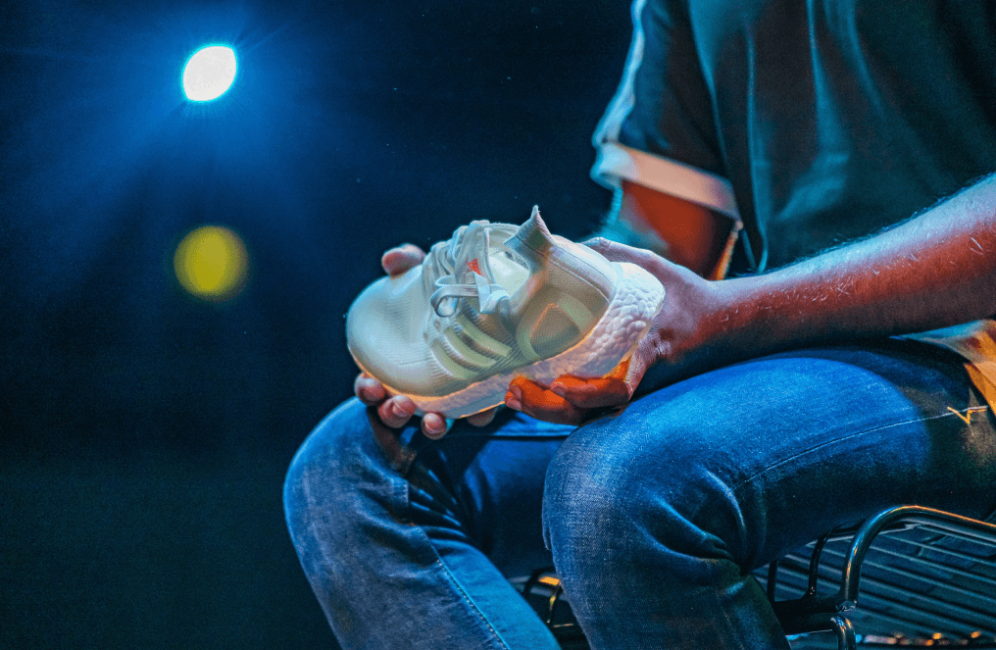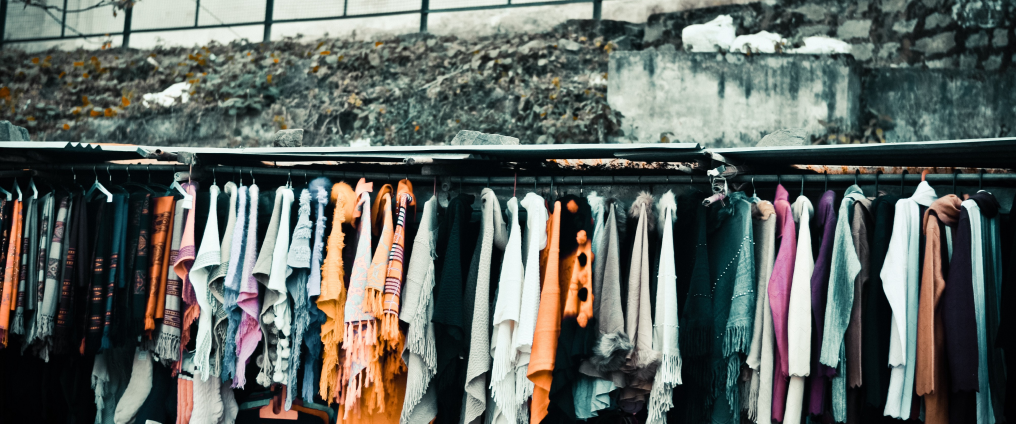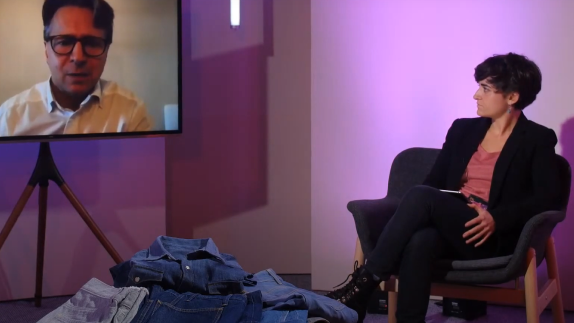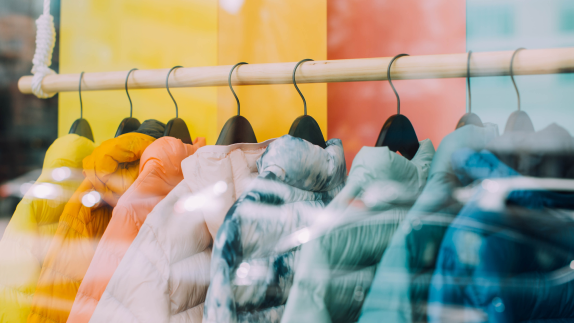The fashion industry can move away from the take-make-waste model — and signs of change are evident
Take a second to visualise your wardrobe.
How many items do you own, and how many do you actually wear?
How often have you stood in frustration gazing at that heap of clothes and said, “I have nothing to wear”?
Shopping today has never been easier. Simply going online means being ambushed by endless targeted ads and emails, telling you to buy now or risk missing out. You step outside and last week’s collection has already been refreshed. When you check your phone, you can’t avoid the army of influencers showing-off the latest Insta-trends.
The fashion industry makes clothes that no one wants to keep, to support a culture that trashes what is no longer in trend.
Source: Euromonitor International Apparel & Footwear 2016 Edition (volume sales trends 2005–2015); World Bank, World development indicators – GD (2017)
It’s an industry that is hugely wasteful. According to the 2017 New Textile Economy report, from the share of clothing that is collected for reusereuseThe repeated use of a product or component for its intended purpose without significant modification., less than 1% will be used to make new clothing. In fact, the last 15 years has seen the doubling of production, while there has been a 40% drop in the amount of time clothing are worn.
These trends are not only severely damaging the environment, they are limiting the opportunities for the fashion industry to succeed in the long-term. The industry already misses out on USD 500 billion in value from clothing being worn less and barely recycled.
New demands
There has never been a better time to act than now. People are taking to the streets demanding “climate justice”, arguing that “beautiful fashion should not cost the Earth”, and urging the industry to become “a force of cultural change”. We are in the middle of an era where more and more customers want to make purchasing decisions that reflect their values. World leaders and policymakers are feeling the pressure and starting to respond. The recently-launched global alliance from the United Nations, aiming to combat fashion’s biggest environmental and social challenges, is just one of many high-profile examples.
Changing customer demands may be the most powerful influence in shifting fashion brands and retailers, and those that do not respond quickly enough risk being left behind. Customers concerned with social and environmental issues are now demanding sustainable and ethical fashion. Young customers are demanding unlimited access to fresh styles, while others are looking for tradable platforms where luxury and vintage garments can be found. Those less influenced by such trends seek one thing — better quality clothes that can stand the test of time.
These growing customer segments require the industry to change. As McKinsey and Company stated in a 2019 report, members of the fashion value chain must “self-disrupt their own identity and the sources of their old success to realise changes that win new generations of customers”.
Making fashion circular
A circular economy offers opportunities that can help the fashion industry respond to new customer demands while offering new growth opportunities. To achieve this, the fashion industry will need a fundamental redesign: shifting from a take-make-waste model towards a reuse-based model. Unlocking this potential would require the industry to pursue the following actions:
Create new business models that increase clothing reuse
Use inputs that are safe and renewable
Develop solutions so used clothes are turned into new
‘Making fashion circular’ is already helping businesses answer today’s most prevalent customer demands, while at the same time circulating valuable materials and reducing waste and pollution.
Unlimited styles, without the waste
As young customers begin to shift their preferences away from the need to own everything they wear, towards the need to simply access unlimited fresh styles; so the number of companies that offer resale, rental and subscription models has grown steadily. These companies have become the top three fastest growing retail categories. In fact, the secondhand market is expected to growth 1.5 times the size of fast fashion by 2028. A third of all Instagram users are now buying items on social networks, and the subscription e-commerce market has been growing more than 100% a year.
Major players such as US ThredUP are leading the way in the fast fashion resale and rental market. ThredUP has now become the world’s largest second-hand clothing marketplace, allowing customers to sell their own clothes via their site. Over 100,000 items across 35,000 brands are being resold per day, and they are on track to being one of the largest distributors of clothing in North America by 2020. When it comes to rental models, YCloset is taking China by storm, currently offering a subscription membership to 5 million members. The company has observed that one piece of trendy, durable clothing can be used by up to 40 different people.
There are also other smaller disruptive companies that are taking additional measures to stimulate further the recirculation and recycling of garments. Vigga has a subscription model that delivers packages of professionally laundered organic cotton baby clothes at the right size at regular times, to match babies’ rapid growth. In doing so, Vigga significantly increases the number of times a single garment is worn. Clothes that are no longer worn can be recycled into new, different products.
A new model for accessible luxury and quality
The increase in demand for resale, rental, and subscription models has not only been driven by those that crave novelty. Customers looking for access to luxury and vintage items also contribute to this trend. These are prized possessions that can gain in value over time, and are often seen as tradable assets with a high resale value. Today, items such as leather backpacks, crossbody bags, winter coats and leather boots have the most resale value.

When designed properly, certain garments and accessories last longer, can be repaired, and command greater resale value. Photo by Nik MacMillan on Unsplash
A shift towards people valuing experiences over items supports these new practices. Research by Kantar Global MONITOR has shown that 90% of global customers value desirable experiences over material possessions. As such, rental and resale models are offering an affordable gateway to highly sought-after luxury and vintage experiences. Rent The Runway and The RealReal, both identified as two of the most disruptive companies in the world in 2018, have been early players tapping into these changing customer trends, at scale. While Rent The Runway provides its members with a monthly subscription model offering access to designer clothing, The RealReal offers its members a platform for selling luxury consignment online, together with an authentication and restoration service. Each now have around 9 million members and together they generate over half a billion dollars in sales.
Scaling these types of businesses models will be vital to keep more clothes in use for longer. But how can we further prolong the life of luxury and vintage garments while avoiding waste?
Levi Strauss has committed to address the industry’s wasteful nature through a range of strategies. After buying a pre-worn pair of jeans from Levi’s Authorized Vintage collection, you can go to the in-house tailors in stories in San Francisco and New York where the jeans can be repaired, resized or restyled. If you’ve fallen out of love with them, you can give them a new lease of life by personalising them. When you no longer want the item, you can send them back to Levi’s for renewal, reconstruction, or recycling. Furthermore, by 2025, if you are looking to purchase a new pair of Levi’s, you will find them to be made out of 100% recycled cotton.
Timeless garments offering durability and personality
Everyone has a few precious items in their wardrobe. Some we value for the performance they offer, others we love for the special moments we have experienced while wearing them. These are items that carry physical and emotional durabilitydurabilityThe ability of a product, component or material to remain functional and relevant when used as intended..
Outdoor clothing company Arc’Teryx aims to keep durable gear in use for longer.
Perhaps the sector that currently benefits the most from designing durable clothing are outdoor clothing companies whose customers seek high-performing gear. Some may offer an extended guarantee or warranty on their garments, such as Feetures, which designs high-performing athletic socks with a lifetime guarantee.
Outdoor sportswear company Houdini has gone a step further. The Swedish brand ensures that its garments are designed according to circular design principles, with the ambition of becoming a positive and regenerative force in society and nature. Houdini’s highly durable gear can be purchased new or second hand, and a free repairrepairOperation by which a faulty or broken product or component is returned back to a usable state to fulfil its intended use. service keeps equipment in use for longer. What’s more, the company offers many items on a rental model. This range of offerings could mean customers with differing disposable incomes could access well-made, durable clothing that was previously unattainable.
But what about those clothes that you own, love and just don’t want to give up, but are losing their spark? If they are in need of a fix, you could send them to the Clothes Doctor and they will be expertly repaired, restored or restyled. Services like Shoespa can inject new personality into your footwear. Customising the style or fit from the outset can build an enduring connection with the contents of your wardrobe, enabled by Amazon’s on-demand custom-made clothing, and customisable shoes from Nike By You.
Whether businesses design for physical durability or offer refashioning services, the lifetime of the garment is extended when we can cherish them for longer.
Taking the fabric out of fashion
In a world heavily influenced by social media, more young people are living and expressing their lives online. There is a growing trend of buying clothes just to showcase them on Instagram. Many are not worn more than once and end up being wasted. However, this has given rise to the concept of ‘digital fashion’. This new phenomenon is virtualising fashion, and in doing so, dematerialising garments.
“Neo-ex”, a digital clothing collection from Carlings, is a recent, radical example. An online store allows you to purchase a digital design, upload a picture of yourself, and have the item made to fit your image. Customers can share the design on social media, without ever owning the physical garment. The digital collection was sold out within a week.
Such business models offer customers access to digital Instagram-worthy garments, while avoiding filling closets with clothes that will never be worn. The outcome? Virtualisation leading to a reduction in the demand for “physical” garment production and saving resource and waste management costs. Could this be the future of fashion?
A better system overall
In parallel to the trends discussed so far, people have also become more aware and passionate about social and environmental causes. They are becoming more “woke” and challenging the status quo to bring about change. Whether it is the way we produce our food, package our products or generate our energy, many have had enough and are demanding industries to take responsibility for the negative impacts they cause.
Millennials and Gen Z are one of the strongest drivers of this movement, and also represent USD 350 billion of spending power in the US alone. Within this group, an estimated 74% prefer buying from ‘conscious brands’ and are willing to pay more for a product that offers complete transparency. This movement is now influencing the fashion industry. More and more brands are responding by integrating social and environmental themes into their products and services. A number of companies have announced bold ambitions such as H&M committing to use 100% recycled and sustainably sourced materials by 2030; and C&A considering making 50% of their products C2C-certified within a decade, and Target aiming for 100% sustainability sourced cotton by 2022.
Considering the reality that no item of clothing can last forever, and new garments are needed to meet demand, startups and researchers are developing solutions that enable garments to be recirculated within the economy.
Dye producers such as Achroma and Pili have made advances towards developing safe products. Achroma synthesises fully traceable dyes from the non-edible waste products of the agricultural and herbal industries, while Pili works with enzymes and microorganisms to produce biotech dyes and pigments.
In 2017, C&A launched the world’s first Gold level C2C certified T-shirt, made from 100% organic cotton and fully compostable at home. The aim is to design garments that come from renewable materialsrenewable materialsMaterials that are continually replenished at a rate equal to or greater than the rate of depletion. sources, and can safely return to a natural system when they are thrown out. Other companies have focused on making biodegradable garments using organic industrial waste by-products such as orange peels, milk and pineapple leaves. Innovations have also been made with biotech labs and microorganisms to grow biodegradable fabrics derived from for example spider silk, plants and fruits.

The Adidas Futurecraft Loop — a trainer designed to the materials can be continuously cycled
When it comes to used garments that are no longer wanted, it is important to ensure that used clothes can be turned into new ones, avoiding downcycling and landfilling. Companies like Re/Done have focused their efforts on redesigning used vintage jeans to be sold as new, while the Renewal Workshop recovers unsold inventory from retailers so that they can be renewed, upcycled or recycled.
Others have worked on innovations in the field of recycling. Mixed up materials glued together make shoes recycling nightmare. Instead, Adidas has developed a running shoe made from just one recyclable material and no glue, so that each pair can be turned into a new pair of shoes. When it comes to T-shirts, Teemill is paving the way. They are made from organic cotton and designed to be returned and remade again. Scanning the QR codes on the wash-care label generates a freepost label that allows you to send the garment back to Teemill for recycling giving you credit toward the next t-shirt.

Teemill adjusted the design and manufacturing process to make the ‘Circular T-shirt’ possible. Image: Teemill
Together, these examples point to a future in which garments are produced to be safe and never wasted. Used garments are turned into new garments, while others are made to biodegrade back into our soils.
Redesigning the system
Making fashion circular is no small task. The processes, incentives, and systems in place today have been built on many years of the take, make, waste mindset. To put the fashion industry on a more positive course requires a design rethink across the textile value chain. By thinking about how the product will be made, how it will be provided and used, and what will happen to it afterwards, designers can make sure the principles of a circular economycircular economyA systems solution framework that tackles global challenges like climate change, biodiversity loss, waste, and pollution. It is based on three principles, driven by design: eliminate waste and pollution, circulate products and materials (at their highest value), and regenerate nature. are taken into consideration from the outset.
The good news is that this shift won’t take place from a standing start. There are bright spots of progress emerging throughout the fashion industry, from the large brands raising ambition levels and investing in research, to the startups launching disruptive new business models, and a growing group of citizens demanding better, safer products, and transparency and responsibility from those that make them. By harnessing the creativity and innovation of the industry to connect and scale these efforts, we can create a fashion system that’s beautiful — inside and out.






